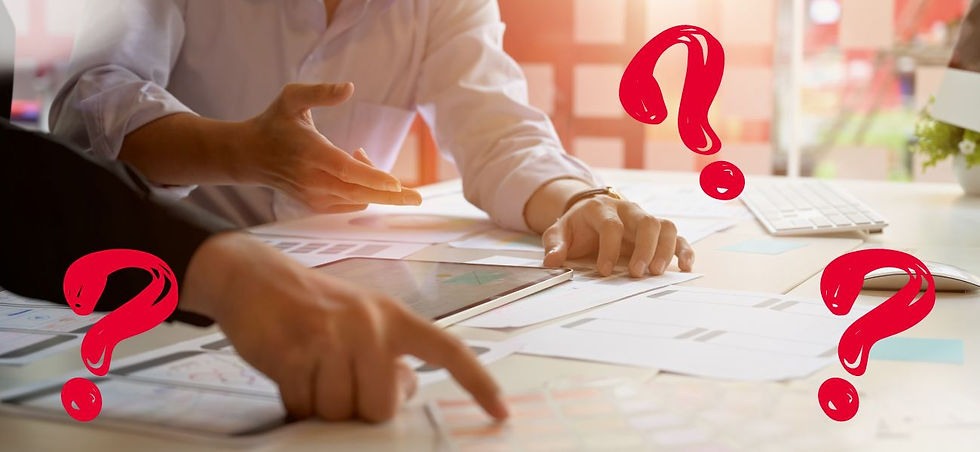Range of Valid Experience: What is it and Why is it Important to Consider for Experience Management?
- William Foster

- Aug 31, 2023
- 4 min read

Starting out with experience level agreements (XLAs) can be a very exciting process. In the early stages, where the lightbulb moment is still at its strongest, we need to determine the kind of experience we want to stage. With the courses we teach rightly emphasising the importance of experience for employees, it may seem that only the best experience will be accepted or sustainable. However, this isn't necessarily the case. Whilst our customers and employees would probably want the best experience they can with your organisation, this may not be possible with the resources at your disposal.
This is where the concept of various forms of valid experience come in. If we cannot currently delight our employees or customers with excellent experience, it is still perfectly valid to provide an experience that will make those people feel comfortable and content. One that is at the very least acceptable.
The reality is that the current state of experience sentiment is built up over, well, the experiences had by your customers and employees. If current sentiment is negative, the wish might be to bring it to levels as great as it could possibly be. However, since the baseline is low, and if resources aren't there to bring it rapidly up, reducing the negatives and improving slowly is a good way to improve experience gradually, surely and sustainably.
A valid experience is contextual. In a restaurant, you might not accept a lukewarm glass of water with marks on it, but someone who has just been finished a triathlon would probably accept it with delight. Reducing any negatives in experience will be seen as a positive and is a valid way of improving experience in its current state rather than immediately wanting to jump to the best experience possible. Having your productivity at work regularly hindered is a negative experience. Having it happen slightly less so but with regular updates about the issue, for example, is good enough for the time being if people are expressing frustration about not knowing what the issue even is. We're easing people's experience anxiety and making the frustrating experience less so.

One of the great benefits of an XLA is increased profitability through improved productivity that is encouraged by XLAs. If it is the case that resources are currently preventing a great experience from being enabled, making them acceptable is a good starting point for encouraging the productivity that may later enable a greater experience to be had. Good experience equals increased profitability equals greater experience being enabled down the line.
Work with the Gravity of Expectations

On another note, it may be more beneficial for your organisation to start by ensuring an acceptable level of experience and gradually working your way up, not only due to the less strenuous effect on your resources, we should always learn to walk before we can run, but because it can prevent being quickly hindered by the gravity of expectations.
The gravity of expectations is a phenomenon that occurs for everyone whenever they use technology. Said technology starts out as something great and new, but over time the person adapts to the novelty and the technology becomes something normal, or average. As this gravity takes effect, the person will also notice what is lacking in it and decide on the areas that causes the tech to go from exciting to lacking in some way.
In terms of experience, this generally translates to sentiment survey responses, after initial experience initiatives have been implemented and accepted positively, where people are now expressing new experience concerns due to the fact that they've become used to the first iteration of improvements:
'Really glad the response time was solved, however my issues aren't being resolved faster enough'
'The pop-up IT support stands are great, however, the wait time to physically see someone takes some time.'
Responses like these are essentially to be expected after the novelty of a new and better experience has been implemented. Now, imagine if your organisation shot from a poor experience to the best it could be. The same effect would happen, except this time the new experience concerns might be something no longer in our ability to resolve, because all the allocated resources went to making experience the best it could be in the first iteration. This may not be bad in the long term if the greater experience can be maintained. Any improvement in experience is welcome and will bring its own rewards. However, it may be better to gradually build your way up to a great experience if it is apparent that creating the best experience possible could backfire should the resources available become so strained that experience falls back to where we began. In other words, if the best possible experience is something we know couldn't be sustained with current resources, its best to leave it as a later priority when more resources become available.
It is always advised to train for a marathon. Experience management is something that occurs continuously, with plenty of time to warm up and improve the experience we provide over time. If the experience people really want can't be obtained at this time, focus on the aspects that they need, for their job, interactions with products/services etc. Your organisation may not be able to give customers or employees exactly what they want, but you should endeavor to provide them with what they need. That is the great first step in improving their experience.




Comentários